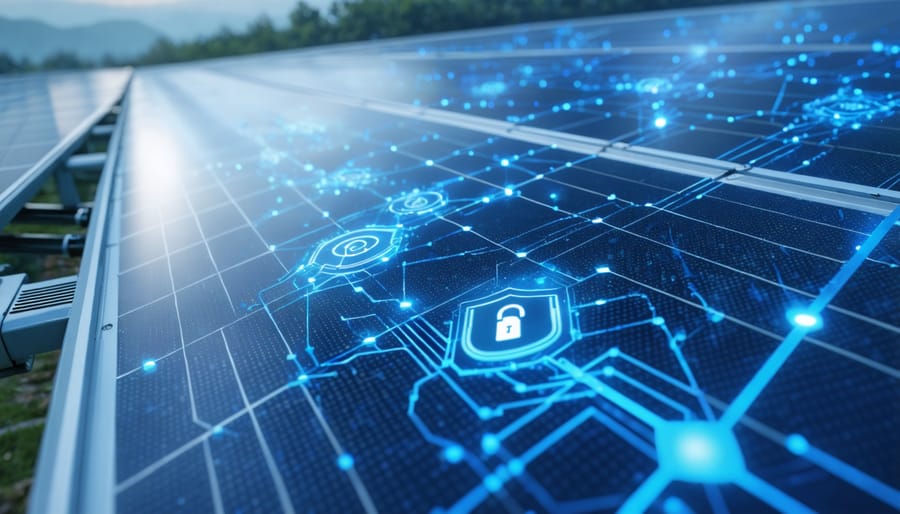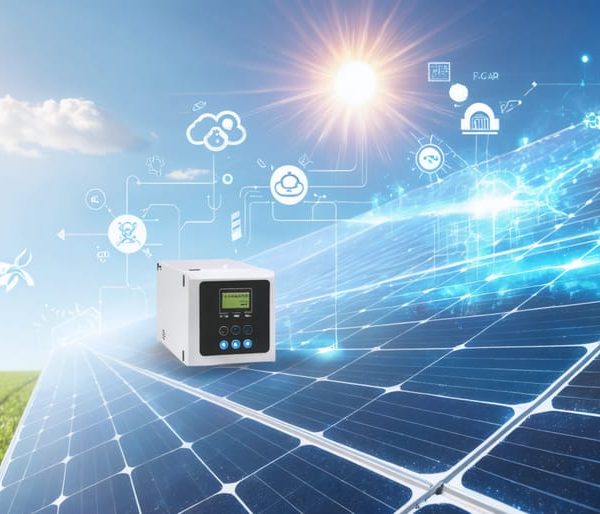Protect Your Solar Investment: Essential Grid Cybersecurity Measures That Work
Protect your solar investment from rising cyber threats with a multi-layered security approach that’s becoming essential for modern grid-connected systems. As solar installations increasingly connect to smart grids and internet-enabled monitoring platforms, they’ve become attractive targets for cybercriminals seeking to disrupt power supply or access private networks. Recent data shows that grid-related cyber incidents have increased by 70% since 2021, with small-scale solar installations emerging as particularly vulnerable entry points.
Smart solar owners are responding by implementing basic cybersecurity measures like regular firmware updates, secure password protocols, and encrypted monitoring systems. Whether you’re managing a residential rooftop array or a commercial solar installation, understanding and addressing these security challenges is crucial for maintaining system reliability and protecting your broader home or business network.
Let’s explore practical steps to safeguard your solar investment while keeping your clean energy flowing safely and efficiently. By following industry best practices and staying informed about emerging threats, you can enjoy the benefits of solar power without compromising on security.
Why Your Solar Installation Needs Cybersecurity Protection
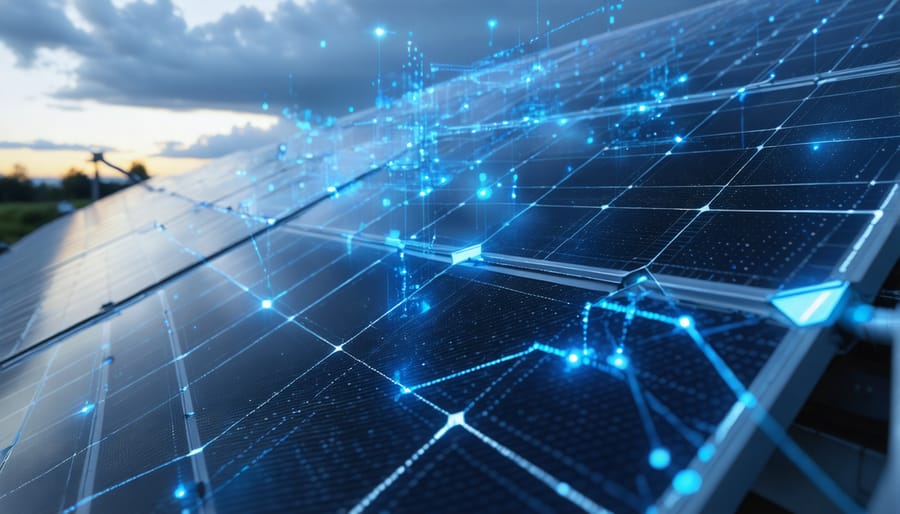
Common Cyber Threats to Solar Systems
Solar systems face several cybersecurity challenges that every system owner should be aware of. One of the most common threats is unauthorized access to your monitoring systems, where hackers could gain control of your solar setup through weak passwords or unsecured network connections. This could lead to system manipulation, affecting your energy production and consumption patterns.
Data breaches are another significant concern, particularly for systems connected to smart meters or mobile apps. Cybercriminals might attempt to steal personal information, energy usage data, or financial details stored in these connected systems. Some attackers have even targeted solar inverters, which could potentially be used as entry points to your home network.
Grid manipulation presents a more sophisticated threat, where attackers might try to destabilize the power grid by tampering with multiple connected solar systems simultaneously. This could result in voltage fluctuations or even system shutdowns, affecting not just your home but potentially your entire neighborhood.
Malware specifically designed to target renewable energy systems has also emerged, capable of disrupting operations or secretly mining cryptocurrency using your system’s processing power. These threats highlight the importance of implementing proper cybersecurity measures from day one.
Real-World Impact on Your Home and Wallet
A cyber attack on your solar installation can directly impact your daily life and finances. If hackers gain control of your system, they could shut down your power production, potentially leaving you reliant on expensive grid electricity. For homes using solar storage batteries, attackers could manipulate charging cycles, leading to higher utility bills or damaged equipment.
The financial consequences can be significant. A compromised system might not qualify for solar incentives and rebates, and damaged equipment could require costly repairs. Some homeowners have reported losses of $3,000-5,000 from cyber attacks through increased energy bills and repair costs.
Beyond immediate financial impacts, a breach could expose your personal data, including energy usage patterns and payment information. Taking preventive measures now is far more cost-effective than dealing with the aftermath of a cyber attack.
Essential Security Measures for Your Solar Setup
Secure Network Configuration
Setting up a secure network for your solar monitoring system is crucial for protecting your investment. Start by creating a dedicated network segment specifically for your solar equipment, keeping it separate from your main home or business network. This separation acts as an additional security layer.
Choose a strong Wi-Fi password with at least 12 characters, including numbers, symbols, and both upper and lower-case letters. Enable WPA3 encryption if your router supports it, as it offers the highest level of wireless security currently available.
Regular firmware updates for your solar monitoring equipment and network devices are essential. Set up automatic updates whenever possible, and check manually every month for any missed updates. Keep a log of all devices connected to your solar network and remove any unauthorized or unused devices immediately.
Install a dedicated firewall to monitor and control network traffic. Configure it to allow only necessary connections and block all others by default. For remote monitoring, use a secure VPN connection rather than exposing your system directly to the internet.
Consider working with a cybersecurity professional to perform regular security audits and penetration testing of your network setup. They can identify potential vulnerabilities before malicious actors exploit them.
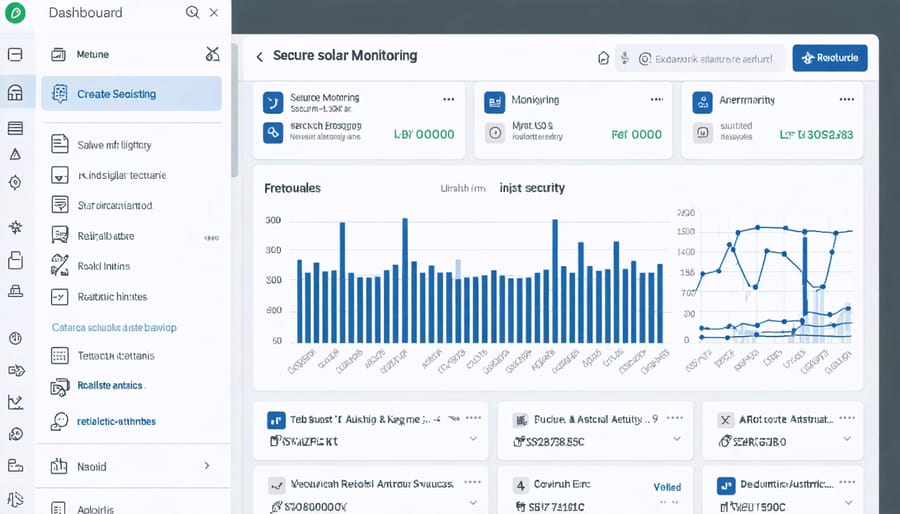
Password and Access Management
Strong password management is your first line of defense in protecting your solar grid system. Create unique, complex passwords using a combination of uppercase and lowercase letters, numbers, and special characters. Aim for at least 12 characters in length, and avoid using personal information like birthdays or pet names.
Consider using a password manager to securely store and generate strong passwords. This eliminates the temptation to use simple, memorable passwords or reuse them across multiple accounts.
Implement multi-factor authentication (MFA) whenever possible. This adds an extra layer of security by requiring both your password and a secondary verification method, such as a text message code or authenticator app.
Set up regular password change schedules, ideally every 90 days, and maintain a strict policy of never sharing access credentials. For business installations, establish clear protocols for employee access management, including immediate credential deactivation when staff members leave.
Remember to secure not just your main system access, but also any connected mobile apps, monitoring portals, and remote management tools. Keep your access logs monitored and regularly review who has system permissions.
Software Updates and Firmware Management
Keeping your solar system’s software and firmware up-to-date is crucial for maintaining cybersecurity and optimal performance. Just like your smartphone or computer, solar equipment requires regular updates to patch security vulnerabilities and improve functionality. Make it a habit to check for updates at least monthly, particularly for critical components like your solar inverter maintenance and monitoring systems.
Set up automatic update notifications when available, but always verify update sources before installation. Only download firmware updates directly from your manufacturer’s official website or authorized dealer portal. Be wary of unsolicited update notifications, as these could be potential security threats.
Create a update schedule and maintain a log of all installations. Before applying any update, back up your current system settings and data. If possible, test updates on a single component before rolling them out across your entire system. Many modern solar installations allow for remote updates, but ensure these connections are secure and encrypted.
If you’re not comfortable managing updates yourself, work with your solar installer or a qualified technician who can handle this responsibility. They can ensure updates are properly installed and verify system functionality afterward. Remember that outdated software can leave your system vulnerable to cyber threats, so staying current is an essential part of your solar investment protection strategy.
DIY Security Checks for Your Solar System
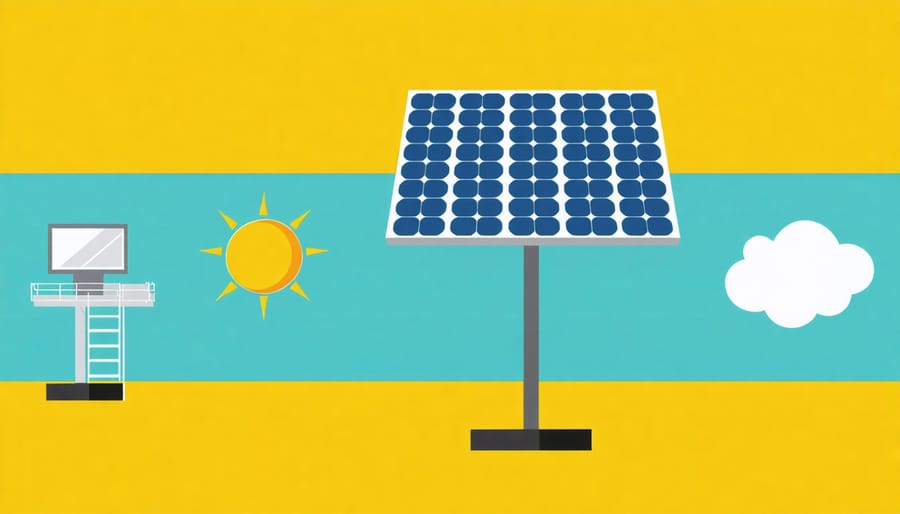
Monthly Security Checklist
Keep your solar installation secure with these essential monthly checks that complement your regular solar system maintenance:
1. Check your monitoring system’s password strength and update if needed
2. Review system access logs for any unauthorized login attempts
3. Verify that all firmware and software updates are current
4. Inspect network firewall settings and security rules
5. Scan connected devices for potential malware
6. Document any unusual system behavior or performance changes
7. Test backup power systems and emergency shutoff procedures
8. Confirm that remote monitoring alerts are functioning properly
9. Review and update emergency contact information
10. Check physical security measures (locks, cameras, sensors)
Keep a monthly checklist log to track these tasks and note any concerns that need professional attention. Set calendar reminders for these checks to ensure consistent monitoring. Remember, prevention is always easier than dealing with a security breach, and these simple steps can significantly reduce your system’s vulnerability to cyber threats.
Warning Signs to Watch For
Protecting your solar installation starts with recognizing potential security threats early. Keep an eye out for unexpected system shutdowns or irregular power output patterns that don’t match weather conditions. If your monitoring app shows unusual data patterns or frequent disconnections, this could indicate someone tampering with your system’s communication.
Watch for unexplained changes in your system settings or unfamiliar devices connecting to your home network. Be alert to sudden spikes in energy consumption that don’t align with your usual usage patterns. If your inverter displays error messages more frequently than usual, especially related to communication or configuration, take note.
Another red flag is delayed or failed system updates, which might mean someone is blocking legitimate security patches. Pay attention if your energy monitoring platform shows login attempts from unknown locations or at unusual times.
Remember, these warning signs don’t always mean you’re under attack – sometimes they’re just technical glitches. However, treating them seriously and investigating promptly can help prevent potential security breaches before they become major problems.
When to Call a Professional
While many grid cybersecurity measures can be implemented by system owners, certain situations require professional expertise. If you notice unusual patterns in your energy consumption data, unexpected system shutdowns, or suspicious network activity, it’s time to contact a cybersecurity specialist. This is particularly important if your monitoring software shows multiple failed login attempts or unauthorized access notifications.
Consider professional intervention when installing new smart grid components or upgrading existing systems. Experts can ensure proper integration and security protocol implementation, reducing vulnerability risks. Additionally, seek professional help if you’re unsure about your system’s compliance with current cybersecurity regulations or industry standards.
After experiencing a security incident, always engage professionals to conduct a thorough system assessment and implement appropriate emergency response procedures. This helps prevent future breaches and ensures your system’s integrity.
Schedule regular professional security audits, especially if your solar installation is connected to a larger grid network or serves commercial purposes. These assessments can identify vulnerabilities before they’re exploited and keep your system up-to-date with evolving cyber threats.
Remember, investing in professional cybersecurity services is far less costly than dealing with the aftermath of a successful cyber attack. When in doubt, always err on the side of caution and consult with qualified experts who understand both solar technology and cybersecurity protocols.
As we’ve explored throughout this article, protecting your solar installation from cyber threats is crucial for maintaining both energy security and peace of mind. By implementing basic security measures like strong passwords, regular software updates, and network monitoring, you can significantly reduce the risk of cyber attacks. Remember that cybersecurity isn’t a one-time setup but an ongoing process that requires attention and periodic reviews.
Take action today by conducting a security assessment of your system and implementing the recommended measures we’ve discussed. Whether you’re a homeowner or business owner, the investment in grid cybersecurity is minimal compared to the potential costs of a security breach. Working with qualified professionals and staying informed about emerging threats will help ensure your solar investment remains secure and efficient for years to come.
Together, we can build a more resilient and secure renewable energy future, one protected solar installation at a time.

